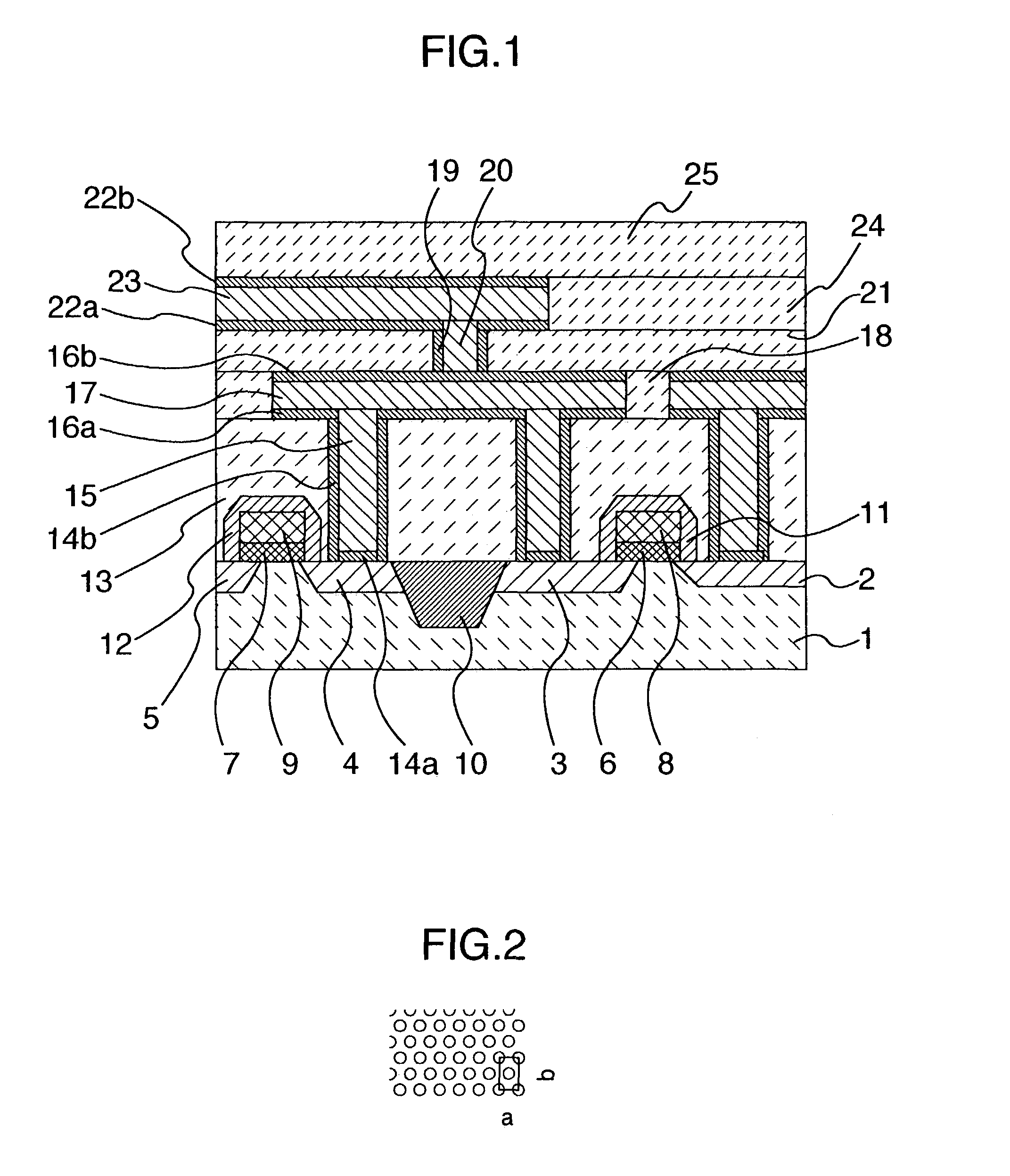Semiconductor device with multilayer conductive structure formed on a semiconductor substrate
a semiconductor substrate and conductive structure technology, applied in the direction of semiconductor devices, semiconductor/solid-state device details, electrical apparatus, etc., can solve the problems of weak adhesion between the adjacent conductive film and the insulating film, voids and disconnections due to migration, and defects such as cracks in the adjacent film, so as to improve adhesion and high stress , the effect of high stress
- Summary
- Abstract
- Description
- Claims
- Application Information
AI Technical Summary
Benefits of technology
Problems solved by technology
Method used
Image
Examples
Embodiment Construction
[0031]Hereafter, a more detailed description will be given for carrying out the invention through the various embodiments shown in the drawings.
[0032]First, a cross-sectional structure of principal portions of a semiconductor device in accordance with a first embodiment of the invention is shown in FIG. 1. As shown in FIG. 1, in the semiconductor device of this embodiment, diffusion layers 2, 3, 4, and 5 are formed on a silicon substrate 1, and gate insulating films 6 and 7 and gate electrodes 8 and 9 are formed thereon, thereby forming a MOS transistor. The gate insulating films 6 and 7 are, for example, silicon dioxide films or silicon nitride films, while the gate electrodes 8 and 9 are, for example, polycrystalline silicon films, metal thin films, or metal silicide films, or a laminated structure thereof. The MOS transistor is separated by a device separating film 10 formed of, for example, a silicon dioxide film. Insulating films 11 and 12, which are formed of, for example, sil...
PUM
 Login to View More
Login to View More Abstract
Description
Claims
Application Information
 Login to View More
Login to View More - R&D
- Intellectual Property
- Life Sciences
- Materials
- Tech Scout
- Unparalleled Data Quality
- Higher Quality Content
- 60% Fewer Hallucinations
Browse by: Latest US Patents, China's latest patents, Technical Efficacy Thesaurus, Application Domain, Technology Topic, Popular Technical Reports.
© 2025 PatSnap. All rights reserved.Legal|Privacy policy|Modern Slavery Act Transparency Statement|Sitemap|About US| Contact US: help@patsnap.com



